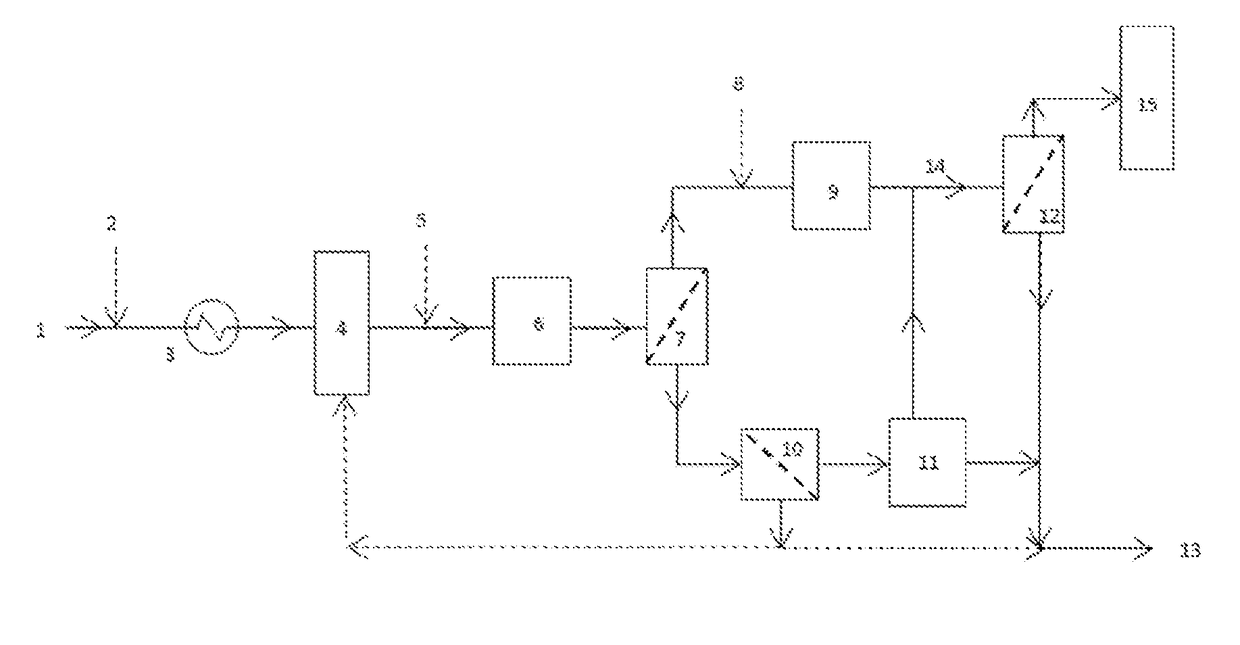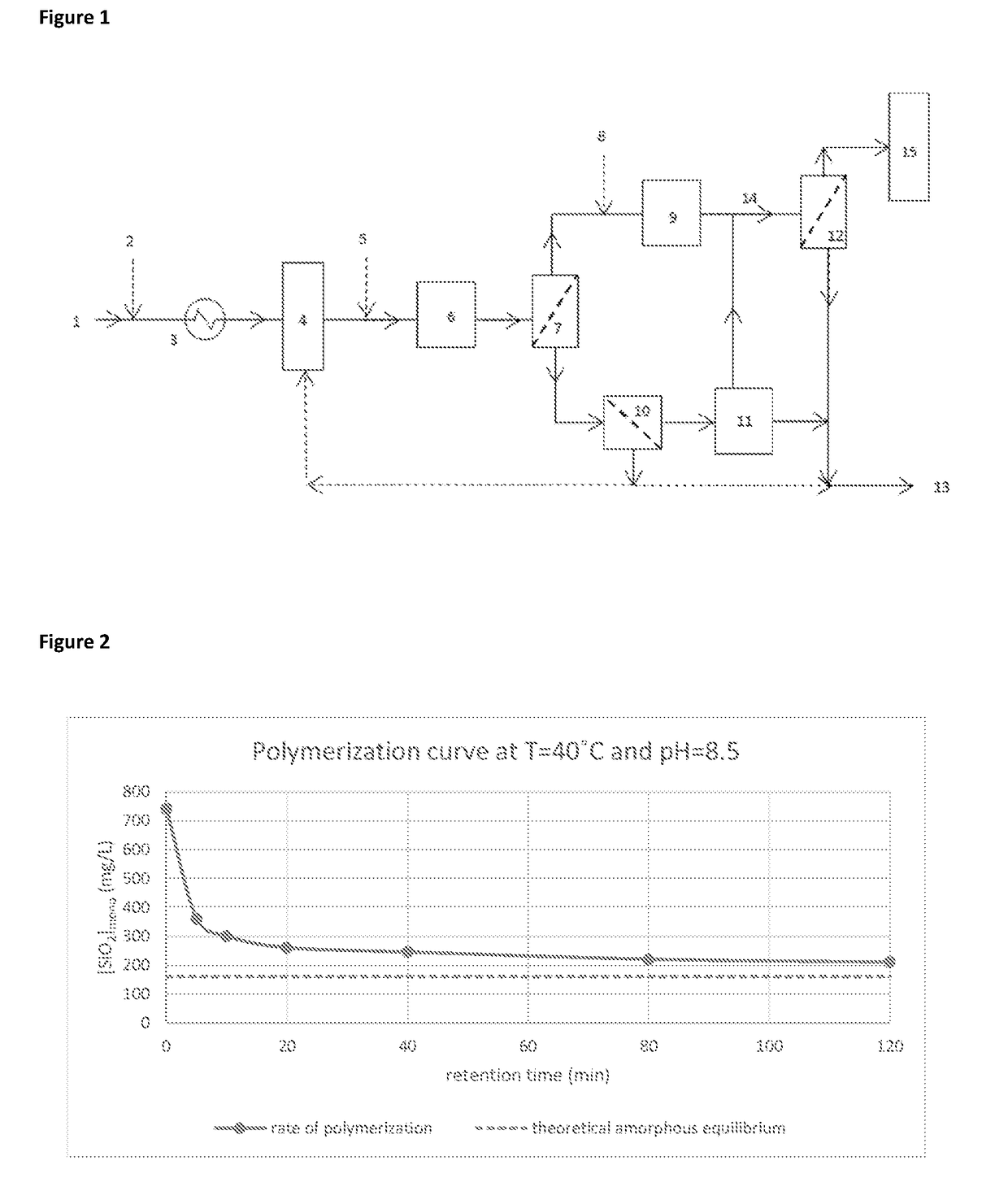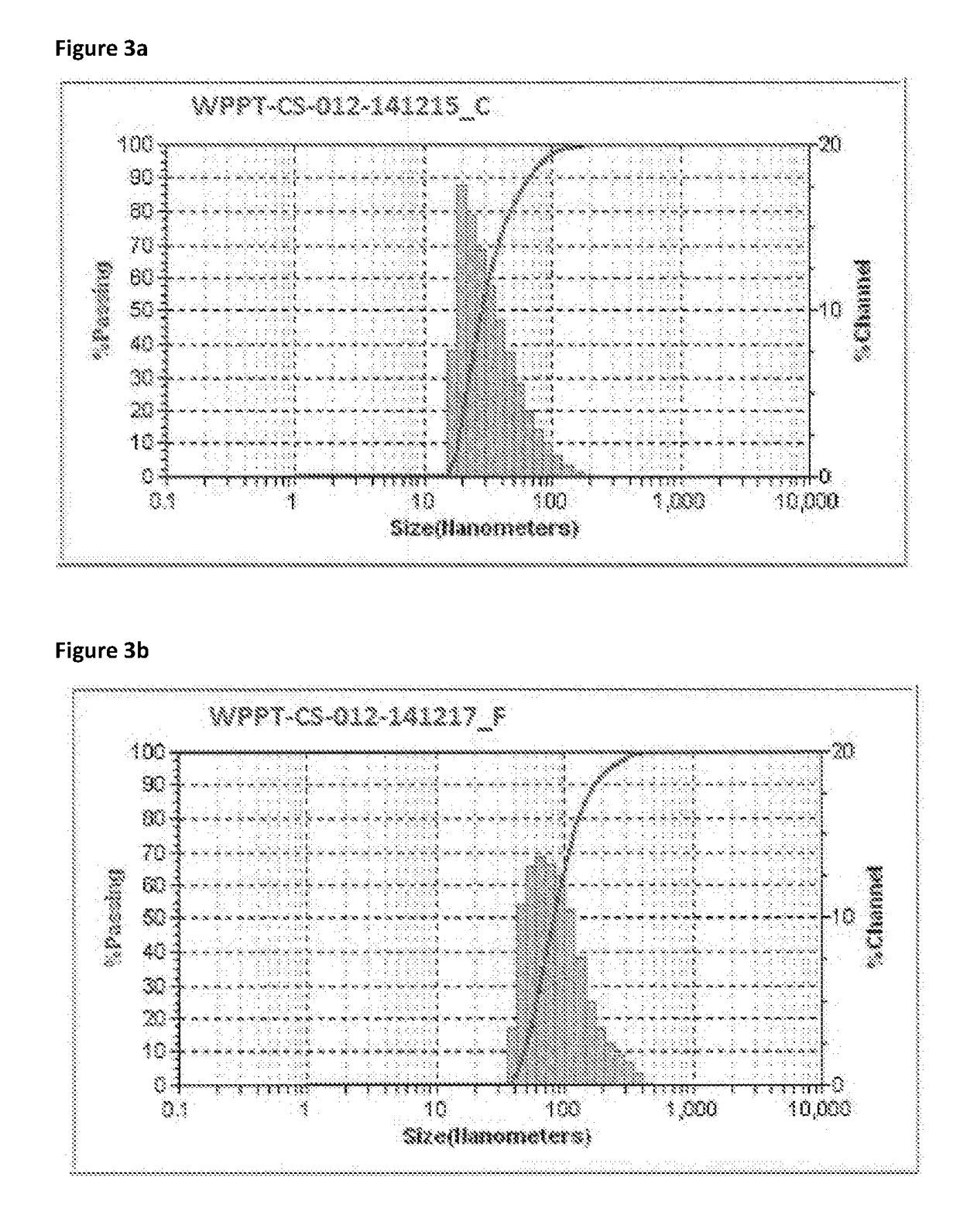Method of production of a colloidal silica concentrate
a technology of colloidal silica and concentrate, which is applied in the field of colloidal silica concentration methods, can solve the problems of affecting the effective utilization and energy recovery of energy, affecting affecting the efficiency of energy recovery, so as to improve the stability of colloidal silica, stabilize the colloidal silica, and inhibit the agglomeration
- Summary
- Abstract
- Description
- Claims
- Application Information
AI Technical Summary
Benefits of technology
Problems solved by technology
Method used
Image
Examples
example 1
ation at Nucleation Temperature
[0219]The polymerisation characteristics of a sample of geothermal fluid with predominantly dissolved monomeric silica was tested to determine colloid formation.
Materials and Methods
[0220]A sample of geothermal fluid from Wairakei (New Zealand) was taken and the monomeric silica concentration adjusted to approximately 740 ppm. The pH of the fluid was adjusted to approximately pH8.5 by addition of sodium hydroxide. The temperature of the fluid was maintained at approximately 40° C. by insulation of the sample in a thermos flask. The polymerisation characteristics of the sample were measured periodically using the molybdite method for molybdate reactive silica.
Results and Analysis
[0221]FIG. 2 shows the polymerisation curve at 40° C. and pH8.5. It can be seen that the greatest drop in monomeric silica concentration is within the first 20 minutes of the reaction. This indicates that the majority of colloidal silica will be formed during this time.
example 2
f Colloid Size and Dispersity
Materials and Methods
[0222]Samples of geothermal fluid were taken from the first UF concentrate at approximately 10 m % colloidal silica. Sample C was formed using fluid reduced to 40° C. and sample F was formed using fluid reduced to 70° C.
[0223]The mean number diameter (MN) was measured using dynamic light scattering (DLS). The calculated specific surface area (CS) and the standard deviation of the particle size (SD) were calculated. MN is the average particle size is weighted towards the number distribution. Therefore this average can be skewed by many small particles to drive the average size downward. This type of average is related to the population.
[0224]SA provides an indication of the specific surface area. This computation assumes smooth, solid, spherical particles.
[0225]SD is a function of the width of the measured particle size distribution. A larger standard deviation suggests a greater spread in the size range of particles.
Results
[0226]
TABL...
example 3
n of a Colloidal Silica Concentrate
Materials and Methods
[0231]Separated geothermal water (SGW) was introduced into a system as shown in FIG. 1. The fluid was received at a series of plate heat exchangers which reduced the temperature from 126° C. to either 40° C. or 70° C. Caustic soda is also dosed prior to the heat exchangers to increase the pH to 8.5, which increases the rate of silica polymerisation. The fluid was then passed to five settling tanks with the fluid being retained in each one for seven minutes giving a total settling time of 35 minutes. This residence time allowed time for the colloids to form. The fluid is then dosed with a dispersant prior to entering the curing tank. The curing tanks will have a residence time of approximately two hours. The purpose of the dispersant is to charge the outer shell of the silica colloids with a negative charge which will cause individual silica particles to repel each other, thus resulting in a highly stable suspension. This preven...
PUM
| Property | Measurement | Unit |
|---|---|---|
| particles sizes | aaaaa | aaaaa |
| temperature | aaaaa | aaaaa |
| temperature | aaaaa | aaaaa |
Abstract
Description
Claims
Application Information
 Login to View More
Login to View More - R&D
- Intellectual Property
- Life Sciences
- Materials
- Tech Scout
- Unparalleled Data Quality
- Higher Quality Content
- 60% Fewer Hallucinations
Browse by: Latest US Patents, China's latest patents, Technical Efficacy Thesaurus, Application Domain, Technology Topic, Popular Technical Reports.
© 2025 PatSnap. All rights reserved.Legal|Privacy policy|Modern Slavery Act Transparency Statement|Sitemap|About US| Contact US: help@patsnap.com



